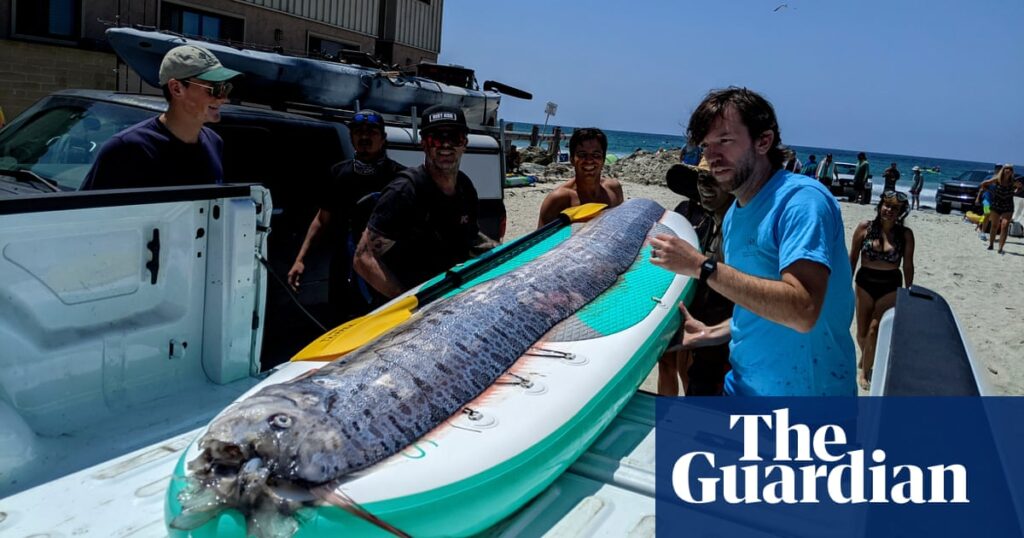This is the second time this year that the oarfish, a rarely seen deep-sea fish historically considered a harbinger of doom, has washed up on California’s coastline.
The Scripps Institution of Oceanography at the University of California, San Diego, reported last week that one of its doctoral students encountered a specimen about 9 to 10 feet long on the beach in Encinitas, Southern California.
These creatures, which have elongated ribbon-like bodies, usually live in regions of the deep ocean called the mesopelagic zone, where light cannot reach. It is sometimes called the fish of the end due to its mythical reputation for predicting natural disasters and earthquakes. In the months before the 2011 earthquake, 20 oarfish were discovered on the coast of Japan.
This month’s discovery comes just months after a group of kayakers and snorkelers off the San Diego coast discovered a dead 12-foot-long oarfish floating in the water.
This is an unusual event. Ben Freble, a fish expert at the Scripps Institution of Oceanography, said in a statement in August that oarfish have only been recorded washing up in California 20 times since 1901. He said this week that changing ocean conditions and an increase in the number of oarfish could be behind the sightings.
Frebble said researchers point to broader changes, such as El Niño and La Niña patterns, to explain the increase in sightings, but those conditions don’t always seem to be pinpointed, and many He explained that the variables could lead to a stranding.
Researchers collected samples of the oarfish recovered this week and frozen them for further study and eventual preservation in the facility’s marine vertebrate collection. Scientists also studied the oarfish that was launched in August. An autopsy then allowed researchers to analyze the organ and generate the “first high-quality chromosome-level genome.”



